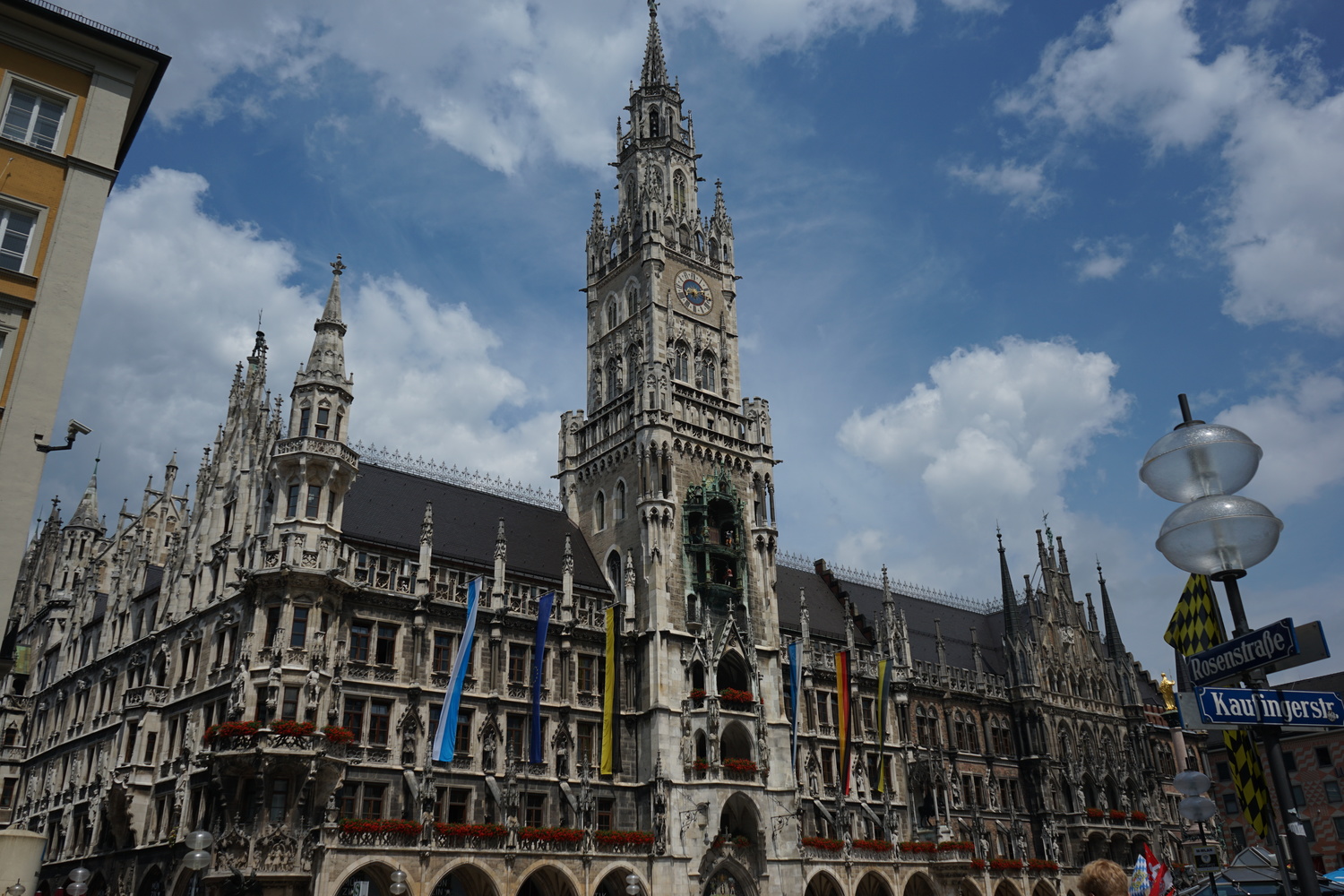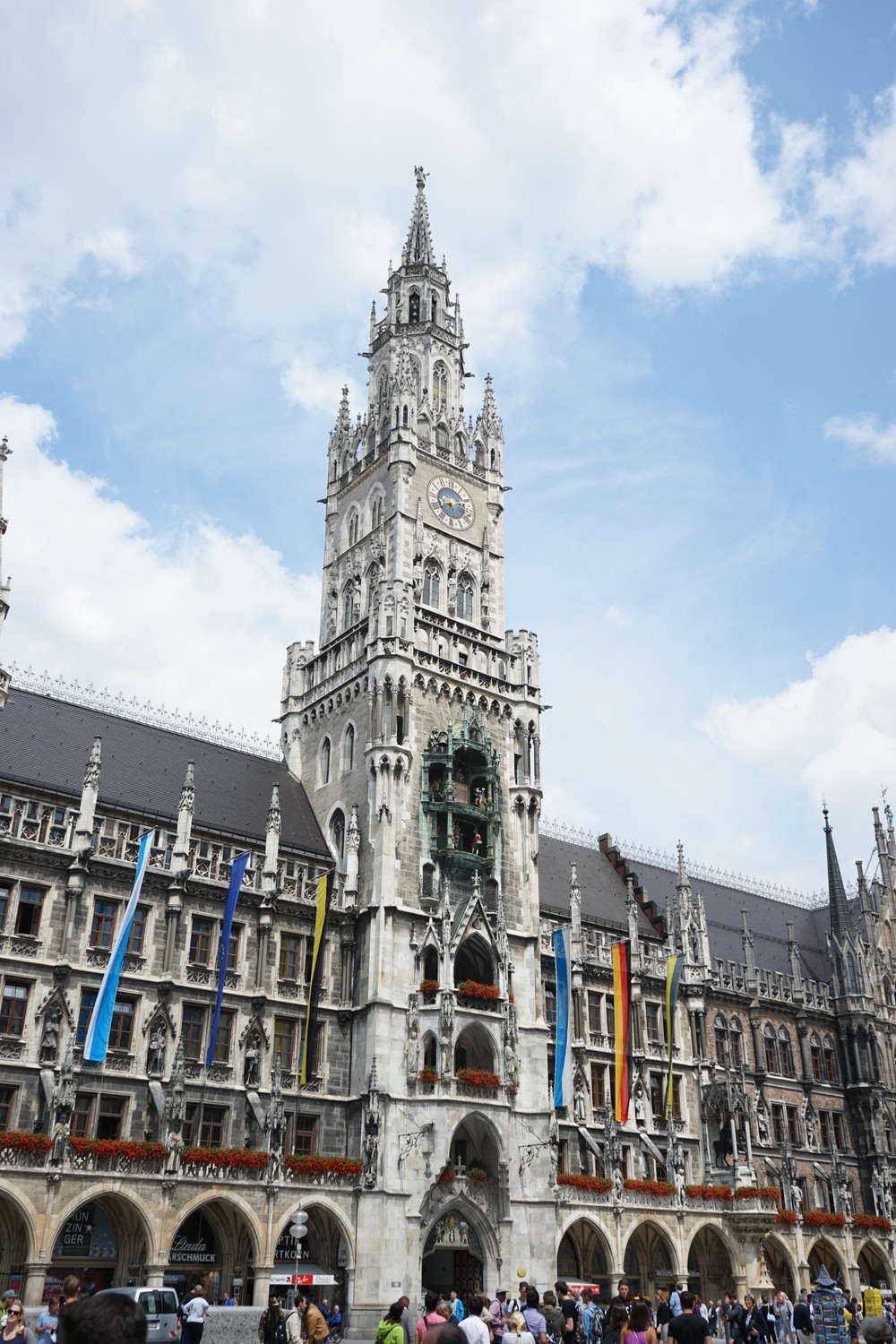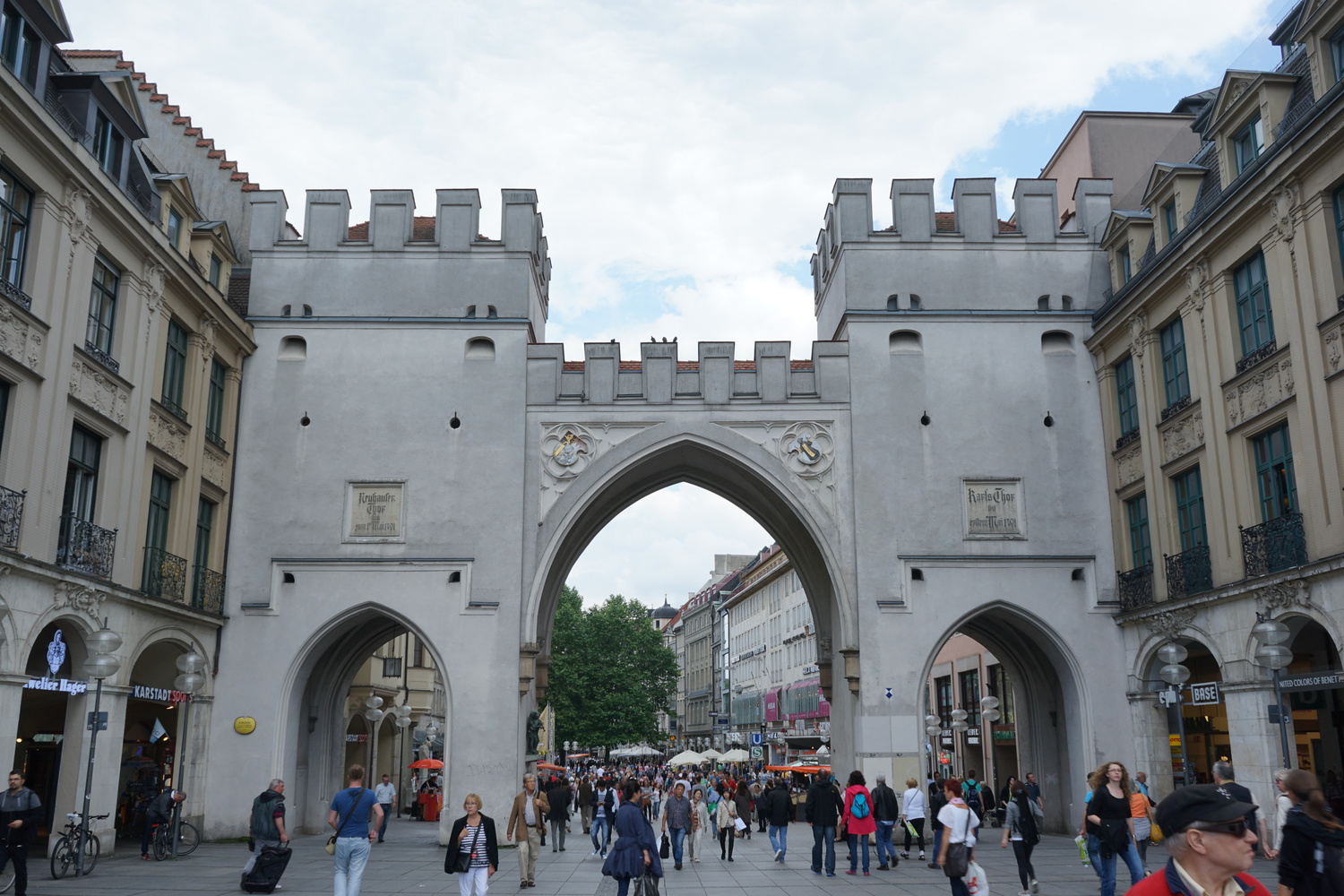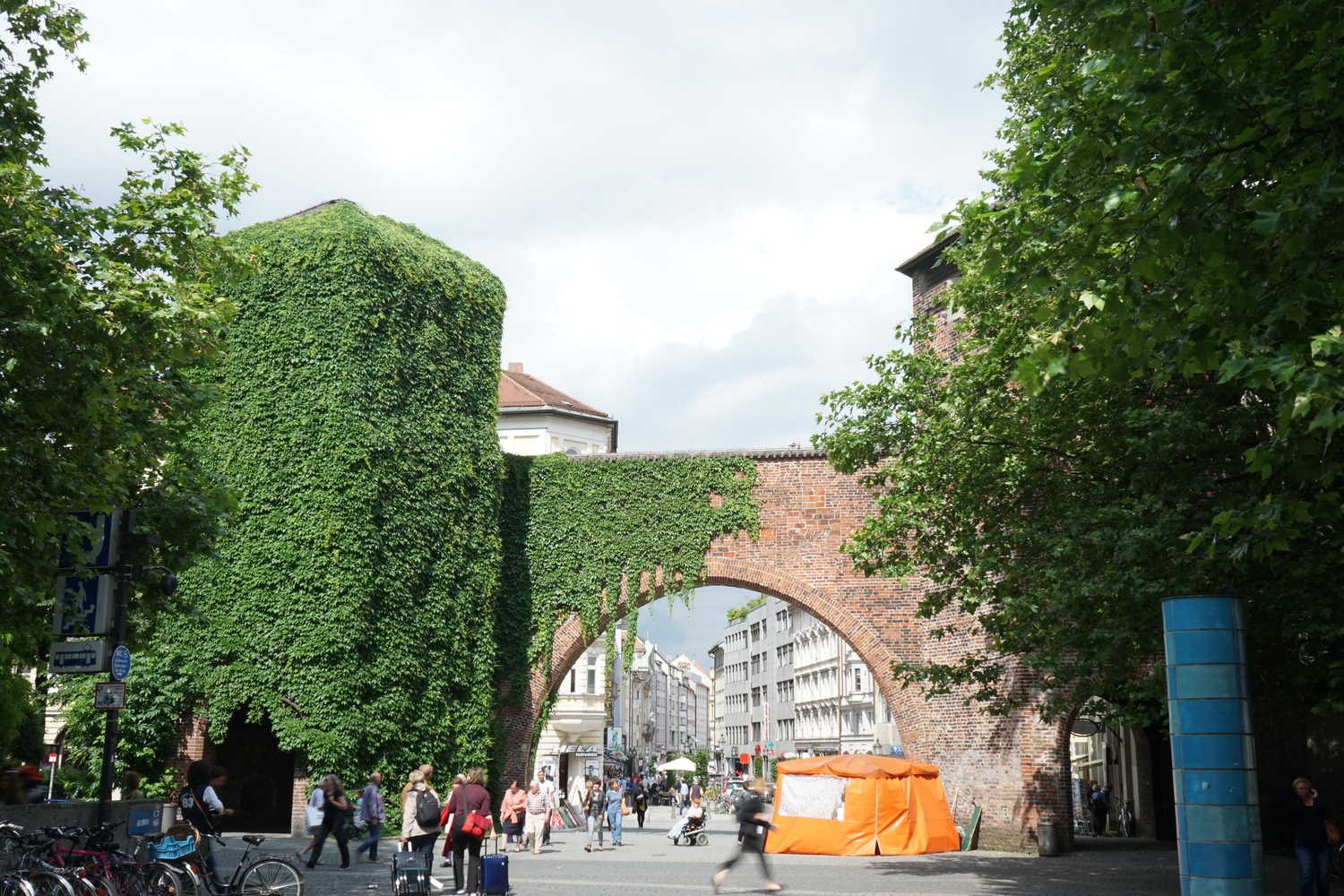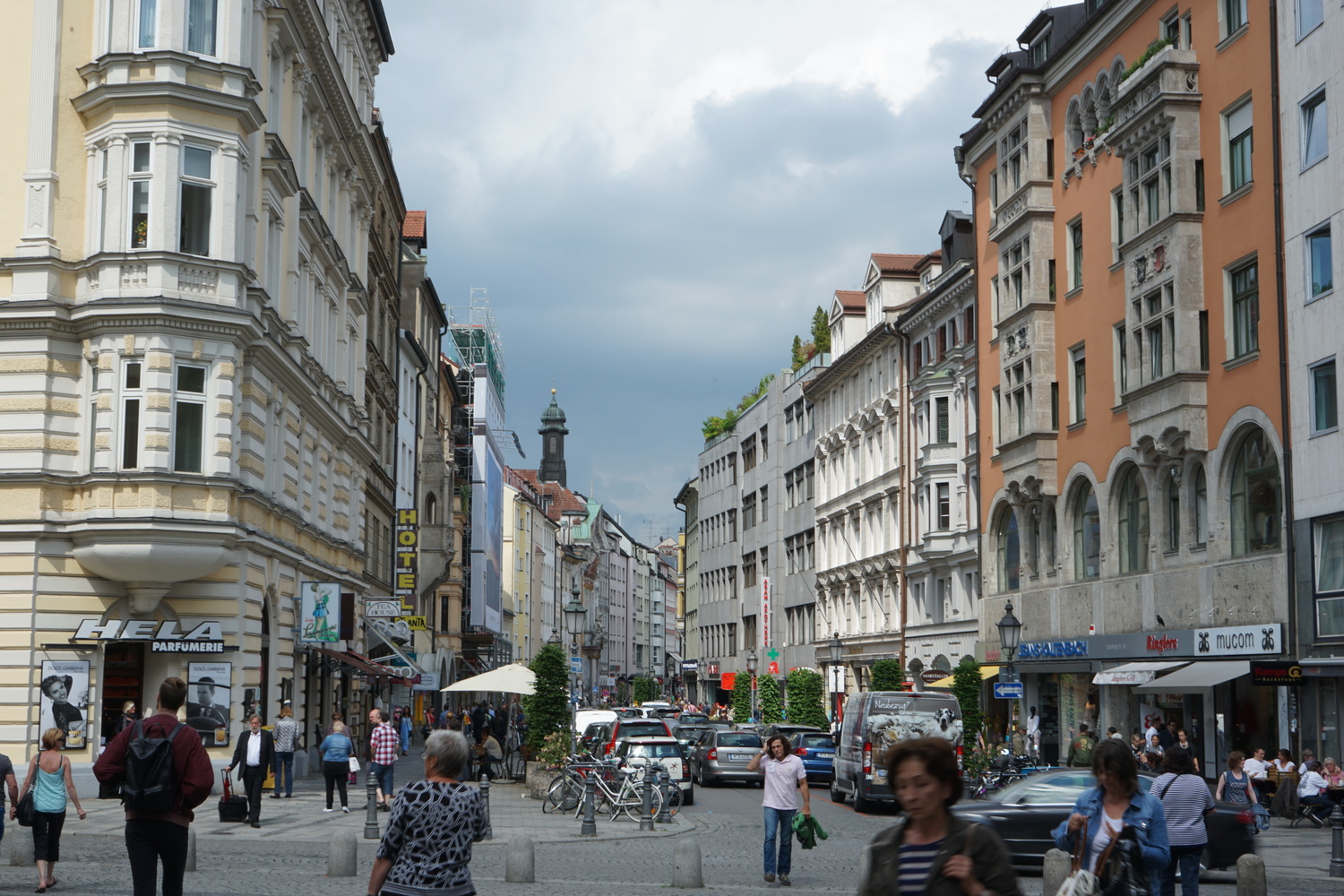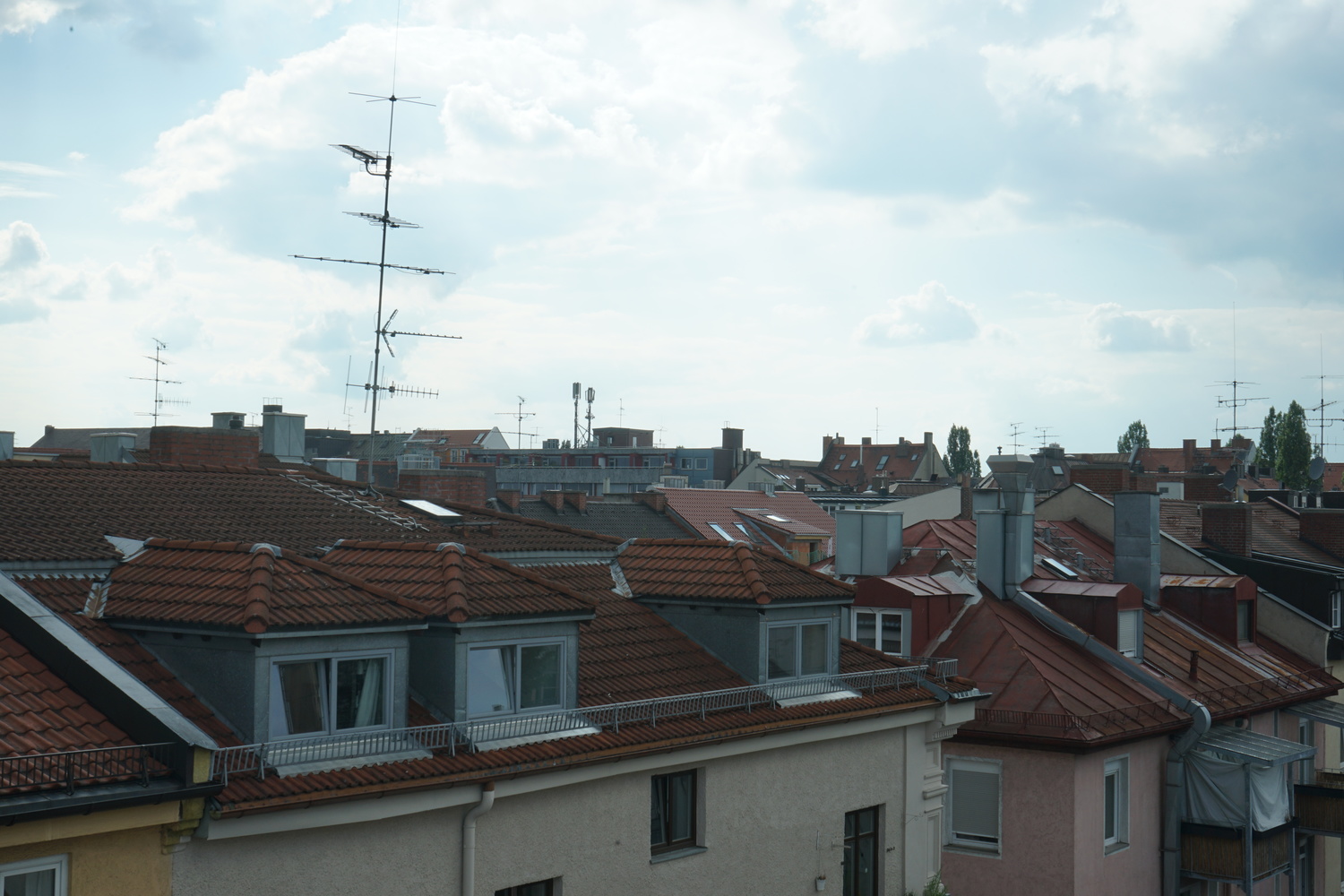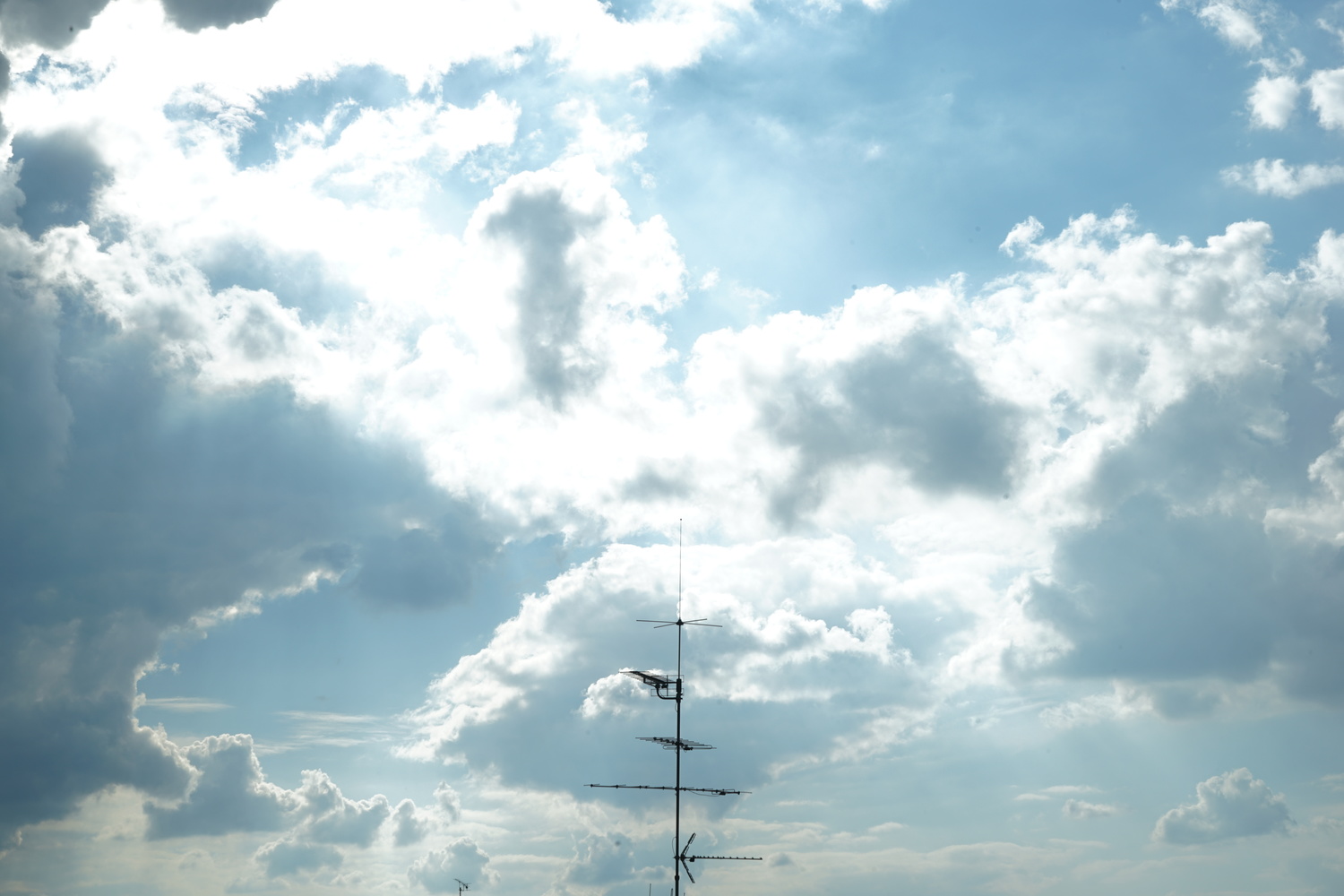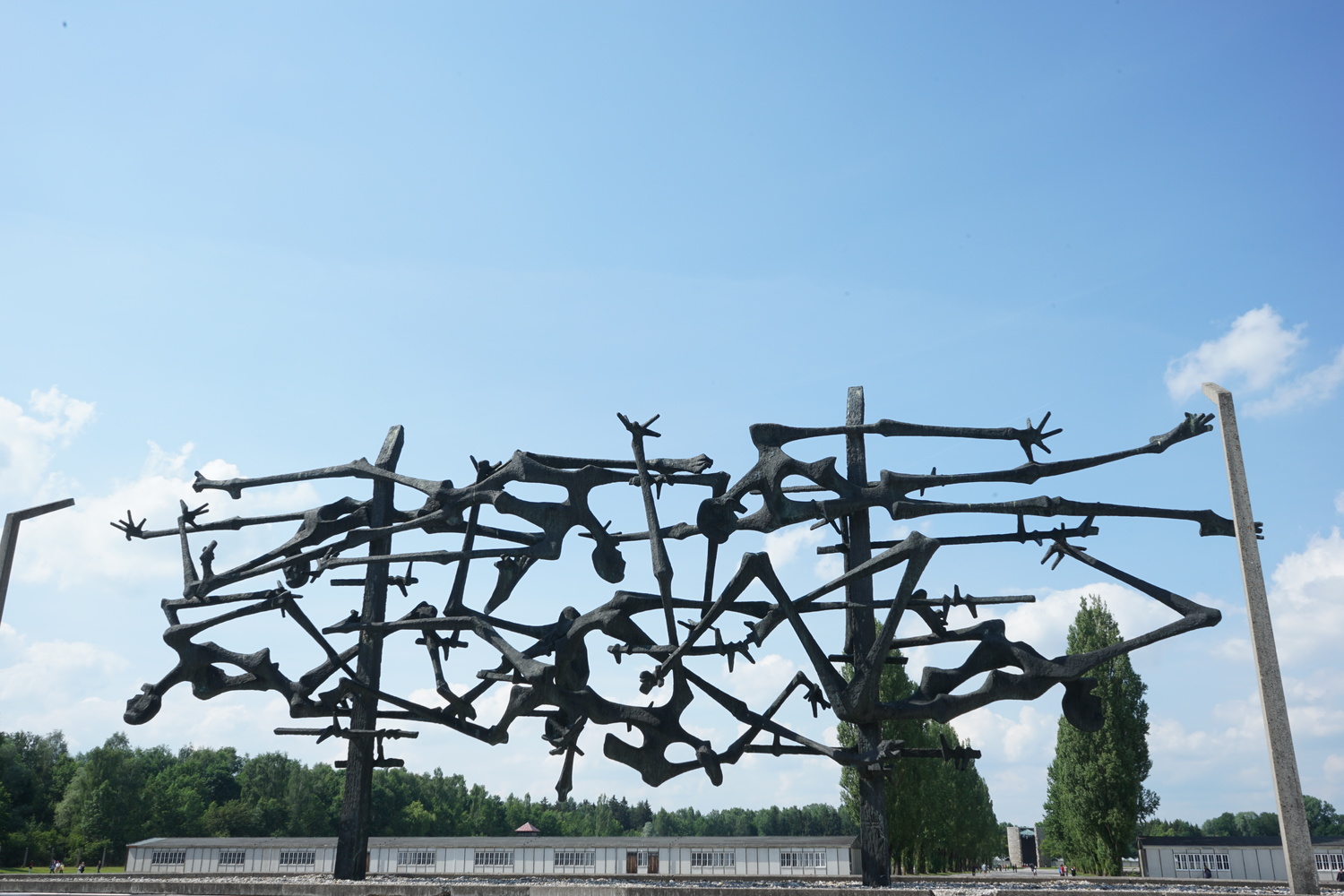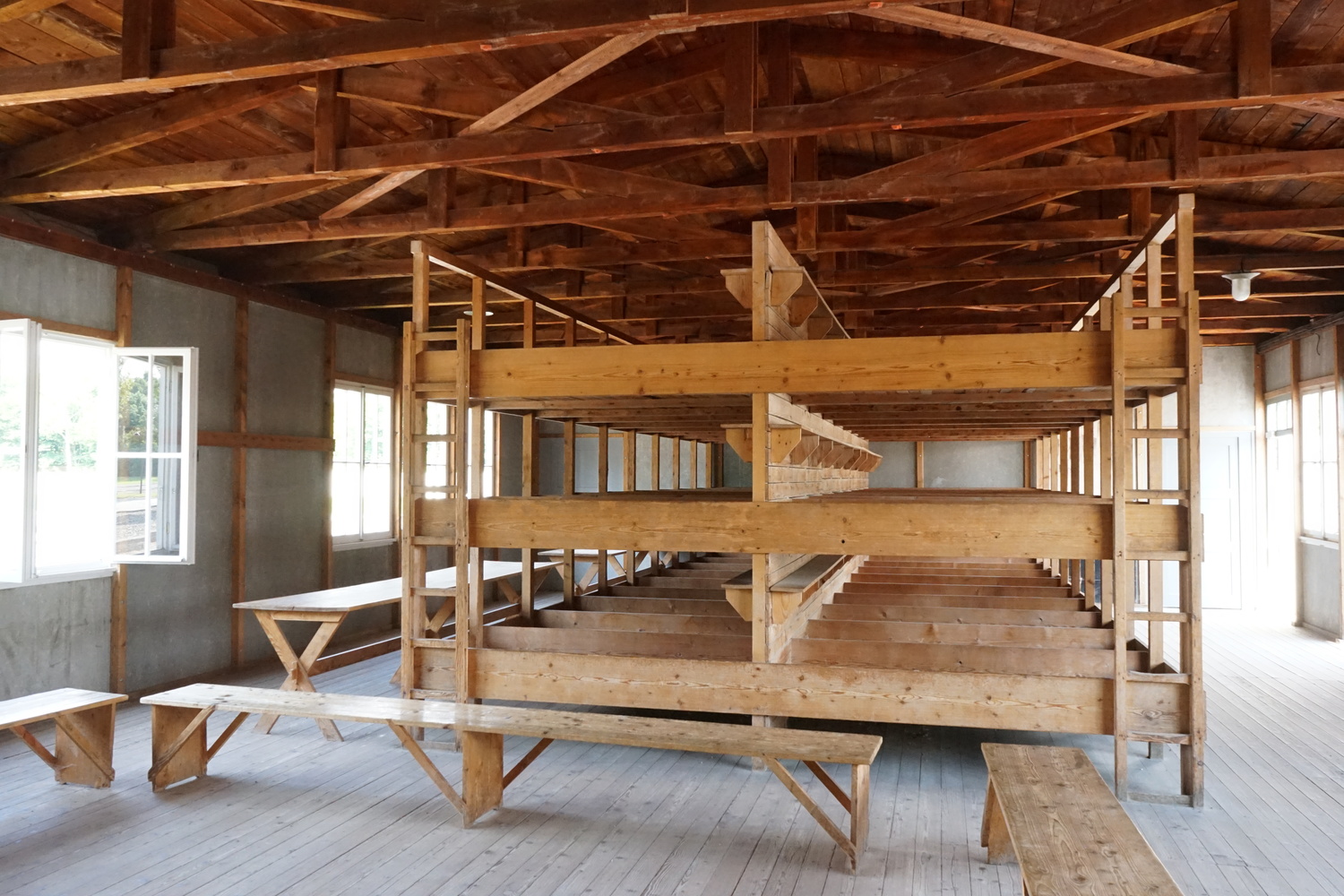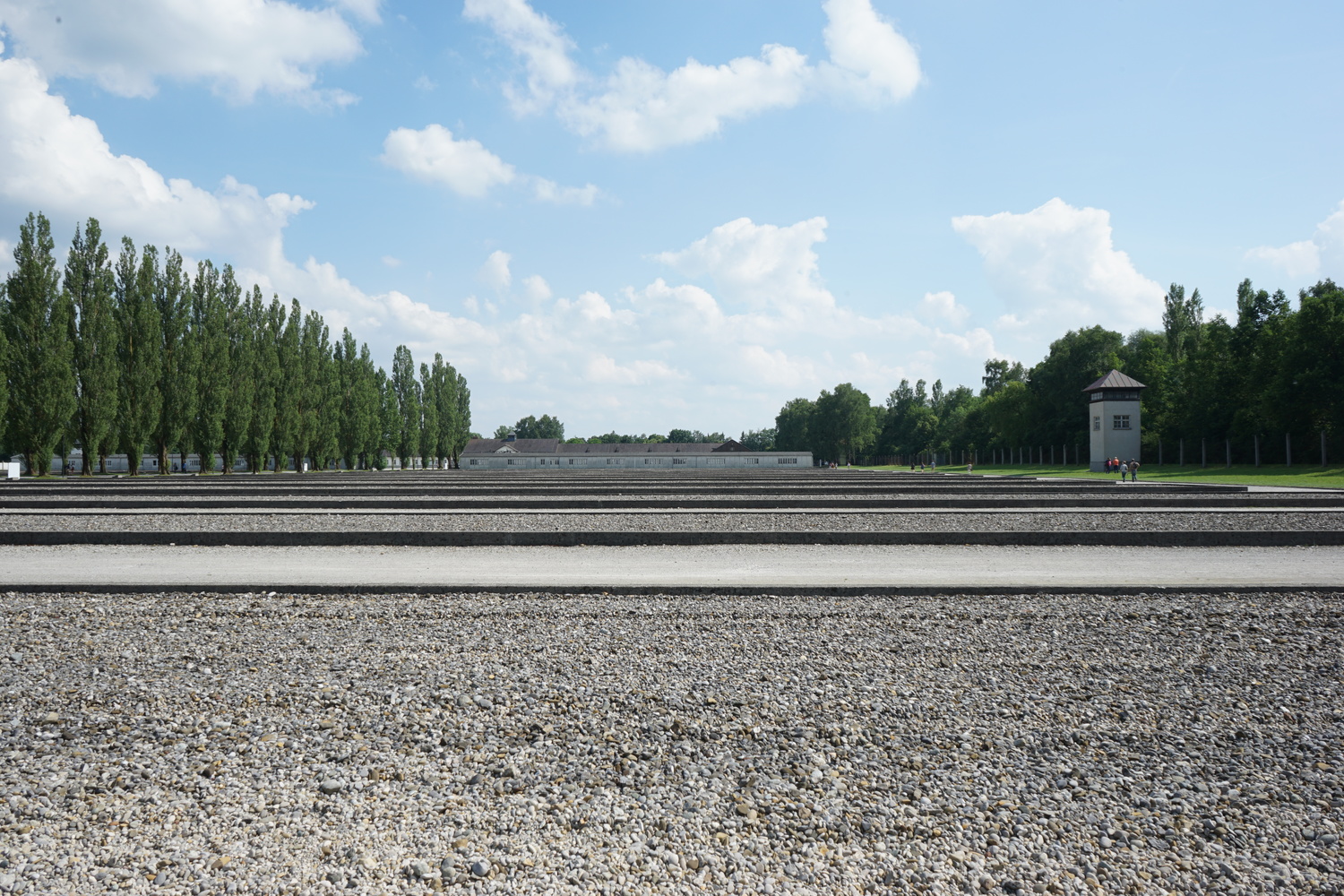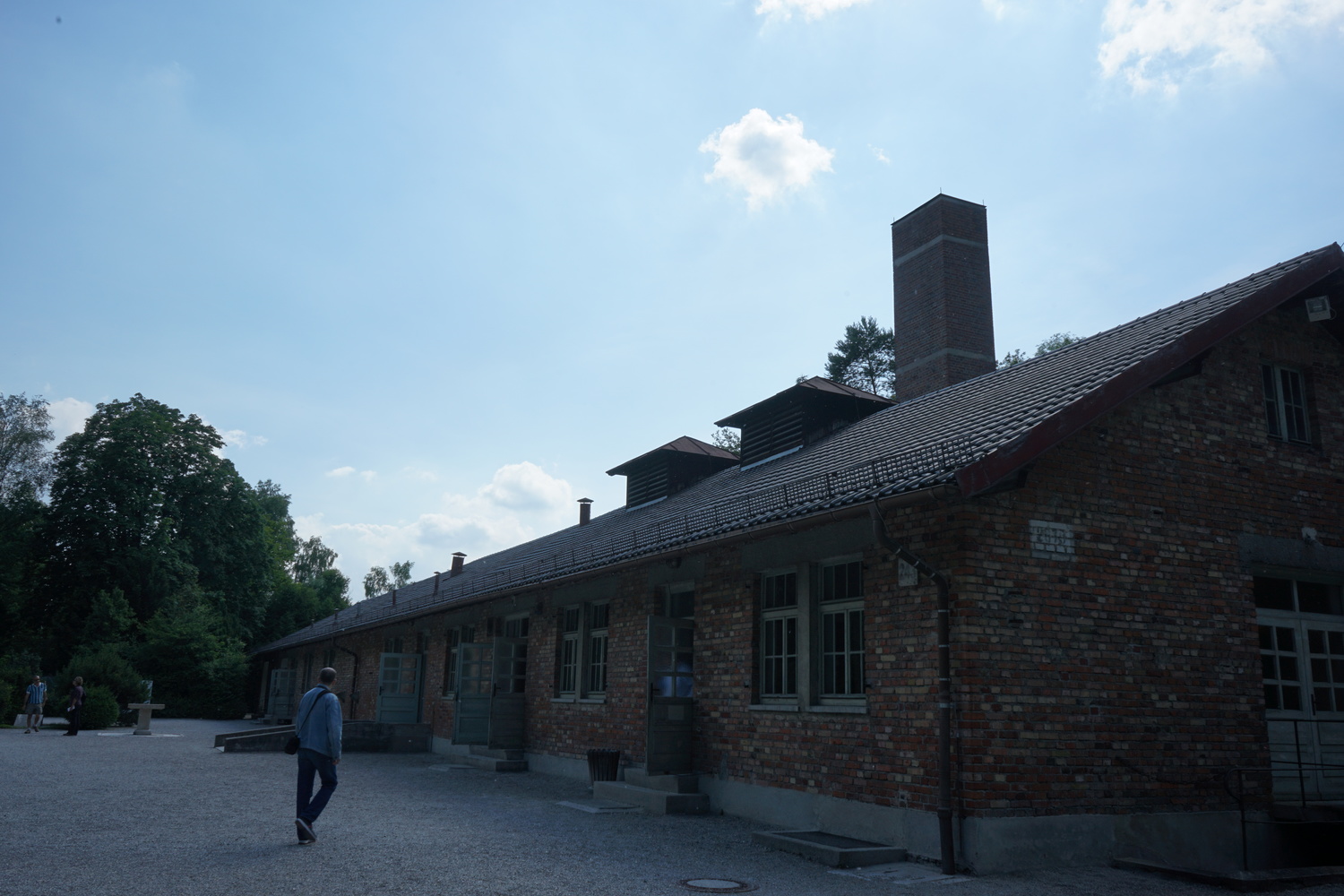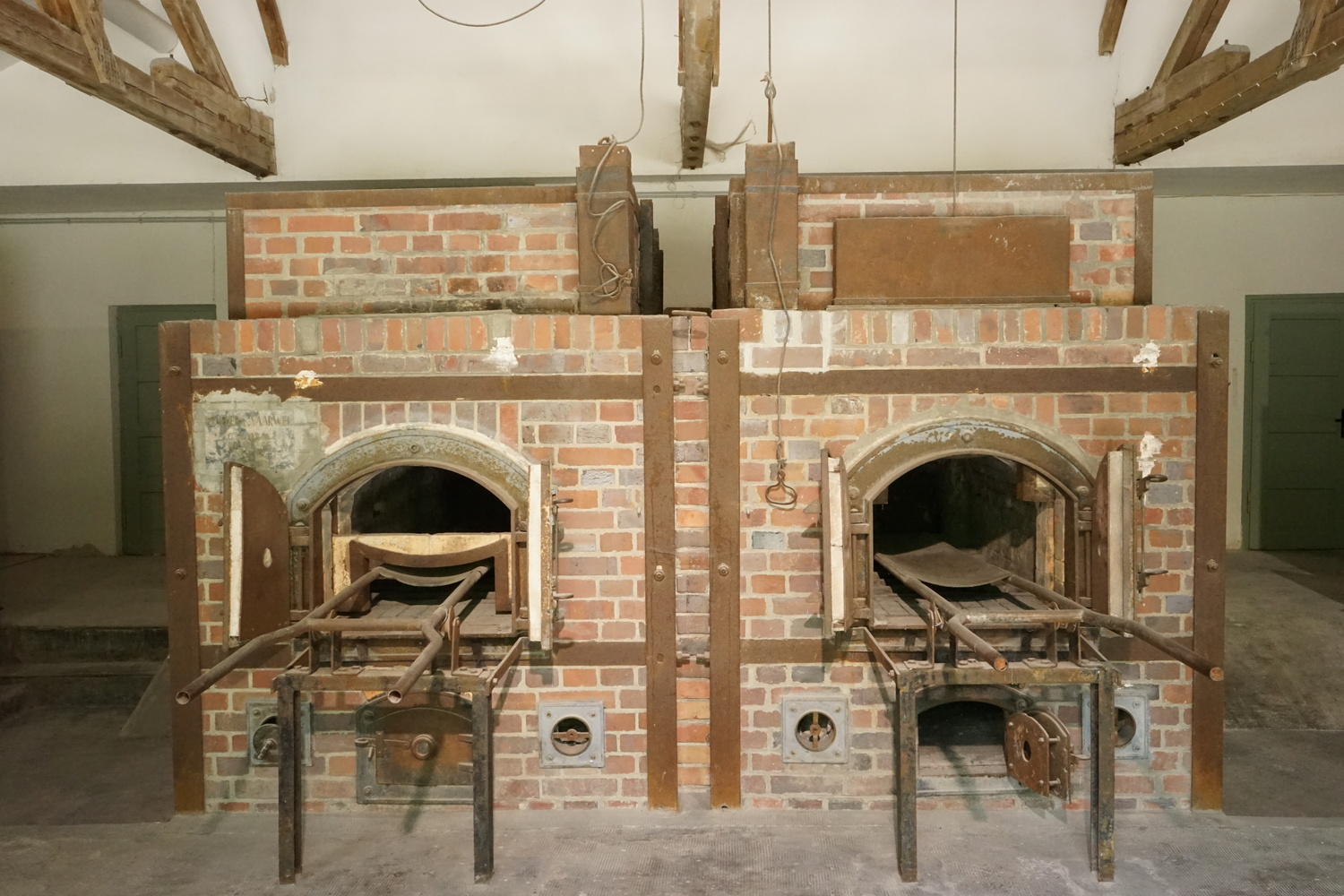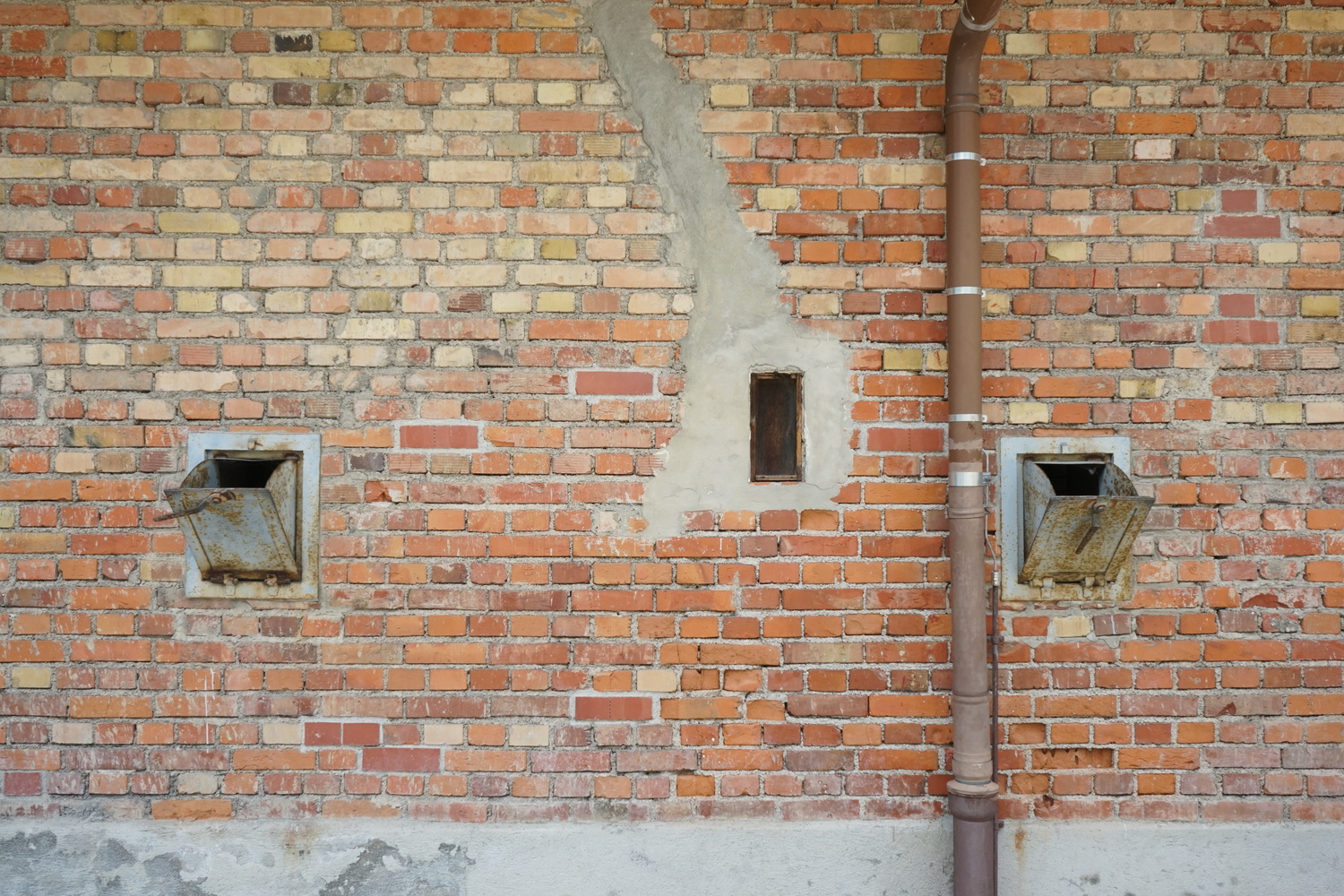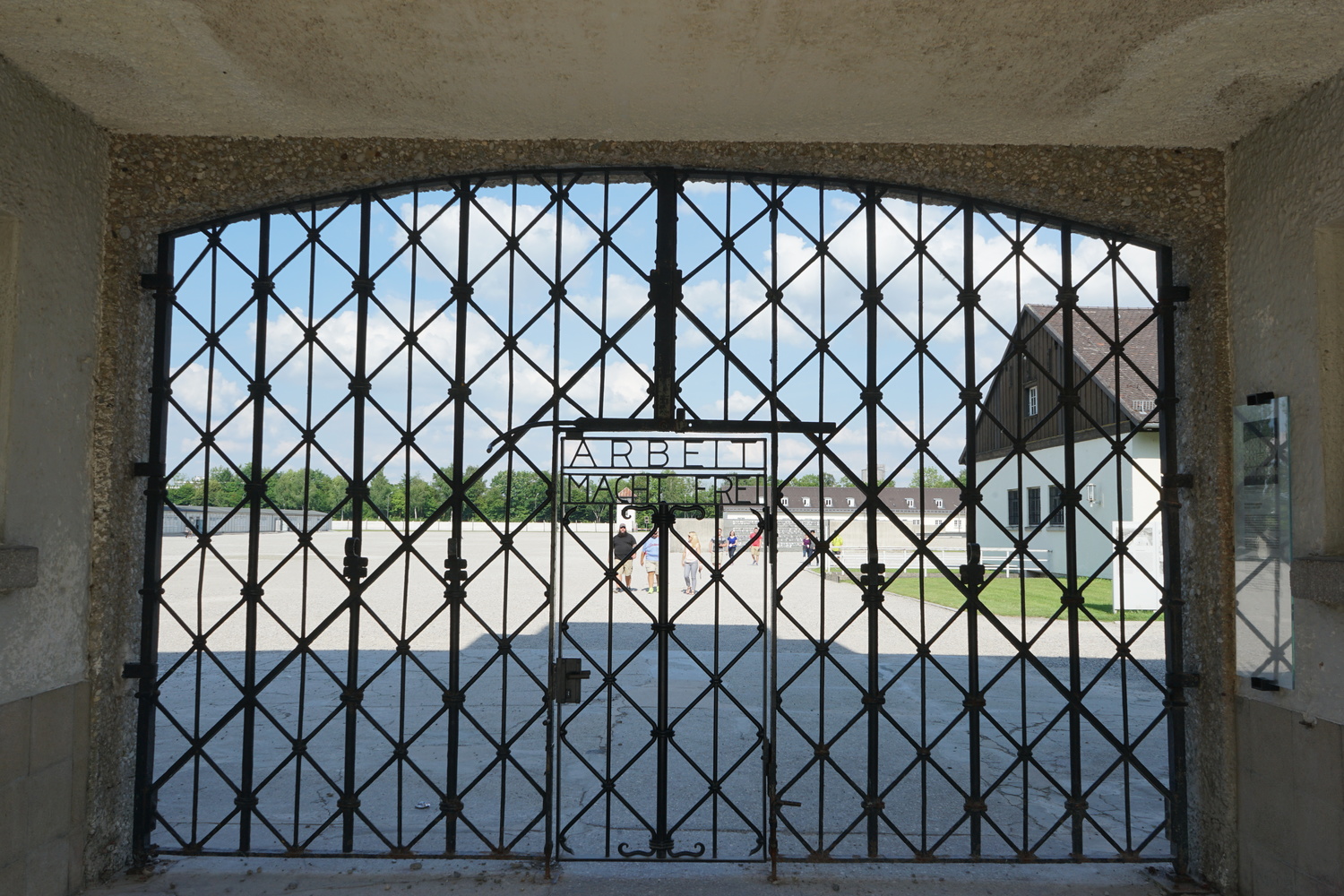Muenchen and Dachau
After Berlin I took the train to Muenchen, which is another beautiful city. Public transportation really is quite good in Germany, in my experience. The two main forms of intra-city transportation are the U-bahn and S-bahn (U is for underground train, and I forget what S stands for. It basically means "public transit". In my experience the S-bahn, often as not, runs underground too.) There are a lot of different inter-city trains, but the one I took from Berlin is the ICE, which I believe stands for Inter-City Express. It was quite fast. (Sidenote - I'm writing this in Austria from a EC, or Europe City train, which is not as fast. But it's in the Alps, so I'll let it slide.)
Muenchen is somewhat smaller than Berlin, and though I spent two days there, I only spent one wandering. That's because I spent the other at Dachau. Muenchen, like Berlin, is very walkable, and there are a lot of beautiful areas. It seems a little more laid back than Berlin, though.
One of the central parts of Muenchen is Marienplatz, which boasts the Rathaus - which is a very old and beautiful building. There are a lot of food vendors in the Marienplatz area - Bavarian food, pizza, fruit carts, McDonalds (which is everywhere in Germany for some reason). I actually had some of the best strawberries I've ever eaten there from one of the fresh fruit stands - I got 500 grams' worth for 3 Euro. I also ate Bavarian food there a couple times - Bratwurst and Schnitzel. I'm still not 100% sure what Schnitzel is, because they just gave me a fried chicken sandwich with BBQ sauce. That's not really what I was picturing. On the plus side, I think I might be getting better at German - they didn't switch to English until I didn't know how to say "mustard" in German. I still don't.
Dachau was one of the most depressing places I've ever been. The memorial included the huts where the prisoners stayed, a "games area" for the SS which was built by the prisoners and later converted to a convent, a krematorium which was used to burn dead bodies, and some other places. I wasn't able to see the full memorial because it closed at 5 pm. Dachau wasn't an extermination camp, in fact the gas chamber there wasn't used for "mass killing," although there were certainly people who were killed there. The camp housed political prisoners from Russia and other places, political dissenters, and Jewish prisoners. Most of the killings at Dachau occurred before 1942, when the Nazis decided that prisoners would be better used as slaves to manufacture armaments. That doesn't mean the conditions got any better - more prisoners poured in, and the place became overcrowded. By 1944, the camp had ten times the occupancy it was designed to support. There was a medical center that in any other situation would be called a torture center - it was run by a sadistic political prisoner from Austria, and the SS allowed him to do whatever he wanted to the prisoners. Getting sick was a death sentence, and surgery was not done with any anaesthetic or care for the patient. Young surgeons trained on healthy prisoners, rather than cadavers. There was a well-equipped dental area, which was used to demonstrate the humane conditions in the camps. It was not used for dentistry, but rather extracting gold from prisoners' fillings. Prisoners were, at times, forced to catch pneumonia via whipping with wet towels. Prisoners stood naked in line for weekly showers, reportedly in temperatures as low as -25 degrees C. Starving prisoners resorted to eating dandelions and other plants because they could not get enough calories from food.
I went to bed early after Dachau because I was feeling a bit under the weather - I suppose I'm not very resistent to European variants of the common cold.
Today I'm on my way from Muenchen to Bern, via Innsbruck. I'm currently in Austria, where the Alps are very reminiscent of the Cascades back in Washington. One thing that's different here is that little towns are built right at the foot of the mountains. In the US this whole area would be a national park. The train's moving very slowly right now, not that I'm complaining.
Pictures from Muenchen and Dachau are below.
Some of them might not load yet, because upload speeds are horrendous here so I have to do it overnight, and sometimes the download fails. Most of them should be up, though.
